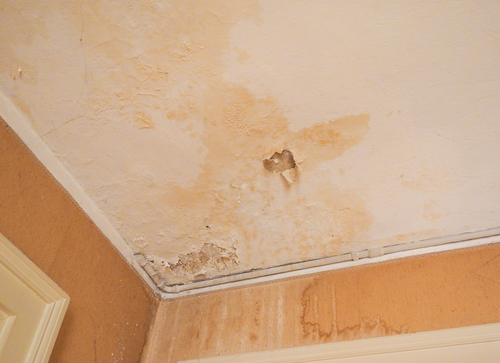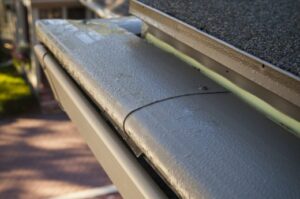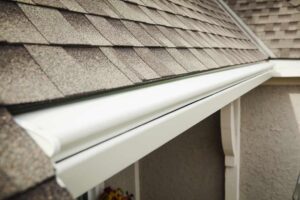There’s something you never want to see on your ceiling and it’s not a spider; it’s a water stain.
What Does It Mean?
A stain can mean several things. The obvious one is there’s a leak in the pipes, particularly if a bathroom is directly overhead. The most common source on an upper floor is a leak in the roof. Less common is a break in a window’s weather stripping which might allow water to seep in during storms.
Or, it can be something that you never considered. It can be your gutters.
How do Gutters Cause Stains?
Gutters cause stains the same way a leaky roof does. Water gets inside the home from an external surface and has nowhere else to go but down. Sometimes, this comes directly from the gutters. Other times, it’s a direct consequence of gutter issues.
There are two reasons why your gutters may be the source of your water stains.
Overflow
The first is overflow. If the gutters are clogged, the water doesn’t reach the downspout. It will splash back onto the siding and get into the soffit and fascia.
This can cause the fascia to rot and water can get into your home at the roof line. If enough pools or flows into unprotected areas, it forms water stains on the ceiling. Eventually, if it accumulates enough, the water breaks through the ceiling.
Downflow
The second way gutters cause stains is downflow. In this instance, water stuck in the gutter channels splashes on the home’s exterior and begins to flow downward. Should a window or door fame stop it from reaching the foundation, it might seep into trim and fractured weather stripping.
If it reaches the foundation and there is no splash block to handle proper distribution, the water can puddle and flow into holes or cracks within the foundation.
Water Stain Prevention
Water stain damage is costly. Not only for repairs but also for potential health issues if the stains start to mold. Action is immediately needed to minimize these issues.
Gutters are the first place to look. Any sign of debris accumulation in the channels or near the downspouts must be quickly addressed. Remove the clogs and wash the remaining debris through the downspout. Ideally, the gutters should be covered with a shield to reduce the risk of future clogs.
Sealing locations where water gets through is the next step once the gutters are secure. Examine the soffit and fascia for any rot or holes. Same goes for trim and weather stripping around doors and windows and the home’s foundation. Repair where needed to reduce the risk of further damage.
In-between those steps, consider installing a K-Guard Leaf Free Gutter System. We prevent damage to the soffit and fascia by installing below your roof’s flood plain. Plus, our covered system is so efficient that the only thing that gets through is water. Finally, we offer a lifetime clog free guarantee so your gutters always operate properly.
If you are looking for that extra layer of protection to prevent water stains on your ceiling, then contact us today at 913-229-7550 for a free consultation. We’ll answer any questions you may have and get you started on a new way to think about gutters and preventative maintenance for your home.




